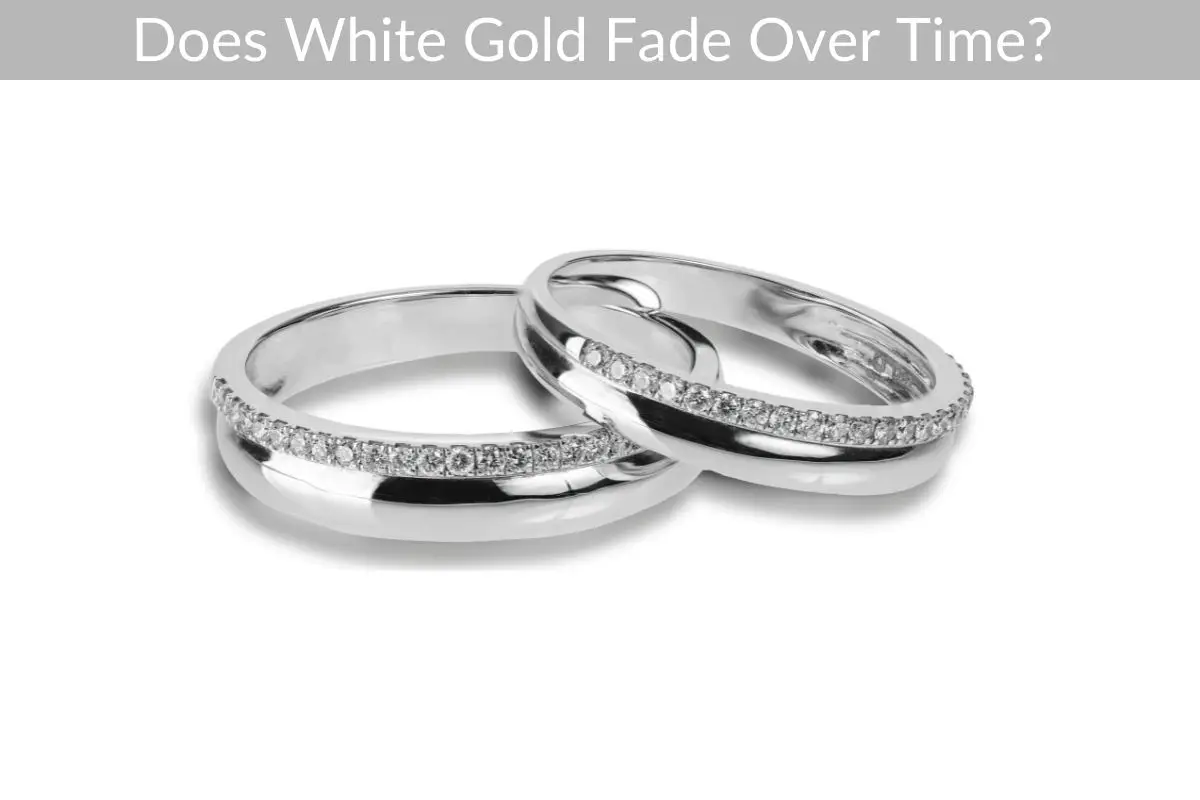Table of Contents
White gold is a popular choice of gold and a favorite of many jewelers and wearers alike.
*This post may contain affiliate links. As an Amazon Associate we earn from qualifying purchases.
It has a brilliant-white luster that works well when incorporated in jewelry and engagement rings, and it is often mixed with diamond sets to enhance its beauty.
Wearers often ask a common question ‘does white gold fade over time’?
In short, white gold does fade over time as after a few years you will have to have it rhodium plated again. However this process is inexpensive and will make it look just like new again.
However, there are certain steps you can take to ensure that your white gold jewelry or engagement ring lasts a long time without tarnishing.
Let us explore the main subjects relating to white gold losing its color.
To see the most popular white gold jewelry just click here.
Does White Gold Tarnish Over Time?
White gold is a mixture of regular yellow gold and metal alloys, including nickel, zinc, silver, and rhodium.
The gold receives its brilliant white shades from the presence of these metals, but at the base, gold is naturally yellow.
Many people choose not to go with white gold products that contain nickel because a fraction of the population is allergic to the metal.
Palladium is often used in white gold pieces because it is as attractive as platinum, slightly cheaper, and hypoallergenic.
An interesting thing to note is that rhodium is used in most white gold items because it is used as a coating.
White gold options that are not plated with rhodium are pretty uncommon and usually have a warmer color.
Silver and zinc provide white gold with its white color, but rhodium is silvery-white, which adds luster to white gold items.
White gold in its pure form fades over time and is the main reason why many coat it with rhodium, which protects it from the effects of discoloration.
Rhodium is an excellent addition to white gold items because it not only gives a silver-white luster to gold but it prevents the gold from tarnishing.
This is because rhodium is an inactive metal, which means it doesn’t oxidize or react with the environment to lose its color.
Jewelers often make sure that all white gold items are coated with a layer of rhodium, whose thickness varies between 0.5 to 2 microns.
Many people opt for re-plating white gold when the rhodium plating gets damaged and cannot be repaired.
Jewelry is subject to general wear and tear and may get scratched or lose some of its color, revealing the yellow underneath.
If this happens, you can find a reputable vendor who will re-plate your white gold jewelry with rhodium, and it’ll look as new as it was originally.
How Long Before White Gold Starts to Fade?
Suppose you’ve recently bought a white gold item and are wondering how long it’ll last before signs of discoloring become apparent. In that case, you should know that, on average, white gold items last between 1 and 3 years before needing to be re-plated with rhodium.
However, this is only an estimate, and you must consider various factors to determine the amount of time you can expect white gold to last.
These include the wearer’s daily habits and the jewelry’s quality.
Higher quality items last longer, and you should always ask your jeweler if the white gold item you are purchasing is rhodium coated.
The thickness of the coating also plays a factor, and a 2-micron coating can be expected to last longer than a 0.5-micron coating.
The gold’s purity also plays a factor in determining how long it’ll last, and your overall lifestyle affects how much wear and tear your jewelry accumulates.
A 2-micron rhodium coating is optimal for white gold jewelry and should not be exceeded; otherwise, the rhodium may start to crack.
Thicker than 2-microns increases the rhodium’s brittleness, and thinner than 0.5 microns causes the plating to wear off faster.
Many jewelers agree that the optimal plating is between 0.75 and 1 microns, which increases the longevity of the items and is the sweet spot.
Quality and Purity of White Gold
The quality of your white gold item plays a significant role in increasing its longevity.
Purity is measured in Karats, which is a unit of measurement.
The purity rating thus lets the buyer know of the amount of gold present in the item.
As the Karat increases, you can expect the quantity of gold to be higher, which increases quality.
However, a 10 Karat piece may be more durable than 24 Karats because gold is soft and flexible in its pure form, and the presence of other metals in 10-Karat white gold makes it durable.
This is one of the main reasons why people who wear their white gold jewelry often may opt for a lower purity because it is more durable against general wear and tear from active living.
A 24-Karat piece is 99.9% gold and is prone to deformation, which is why it should be reserved for special occasions.
Higher purity gold jewelry should be limited to earrings or necklaces because they are less vulnerable.
Factors Causing Discoloration in White Gold
Rhodium-plated white gold items do not tarnish; however, they do seem to change color over time.
The rhodium plating starts to fade, revealing the gold’s yellow color underneath.
This causes many wearers to think that white gold is changing color, but what’s actually happened is that the rhodium plating has faded away.
Un-plated white gold can tarnish pretty quickly because white gold contains a mixture of other metals such as nickel, silver, and zinc.
These metals are highly reactive to the environment and can tarnish or discolor over time.
Final Verdict
White gold is a versatile item when plated with rhodium, and you can expect it to last a long time if the plating is thick.
If you get your hands on white gold that is not rhodium plated, then it is pretty easy for it to discolor due to the presence of highly reactive metals in the mixture.




